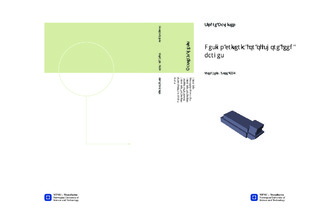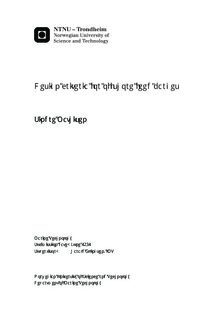| dc.contributor.advisor | Ellingsen, Harald | nb_NO |
| dc.contributor.author | Mathisen, Sindre | nb_NO |
| dc.date.accessioned | 2014-12-19T12:07:13Z | |
| dc.date.available | 2014-12-19T12:07:13Z | |
| dc.date.created | 2012-11-08 | nb_NO |
| dc.date.issued | 2012 | nb_NO |
| dc.identifier | 565969 | nb_NO |
| dc.identifier | ntnudaim:7352 | nb_NO |
| dc.identifier.uri | http://hdl.handle.net/11250/238124 | |
| dc.description.abstract | The fish farming industry faces some problems for the future as the escaping of fish and fish lice. One solution to these problems could be to move the farms further offshore. The main focus of the industry is on the cages the fish is held in, but the feed barge is the brain of a fish farm. Before offshore fish farming is an acceptable solution for the future the design criteria for the feed barge has to be sufficient for more exposed areas.Some regulations both for fish farming and the oil industry have been evaluated. The conclusion from the evaluation of the regulations is that the regulation for floating fish farms is the least strict regulation. The purpose of this report is to enlighten the need for new thinking for design criteria for offshore feed barges by doing a hydrodynamic analysis in HydroD by using WADAM and potential theory applied to a panel model. The computer program is a recognized program developed by DNV. The model in this report is a design which is believed to be the best design for exposed areas. The model is analyzed in both hydrostatic and hydrodynamic conditions. The hydrostatic analyses conclude that the barge is stable and valid for operation in Norwegian waters. For the hydrodynamic analysis it as assumed two different locations with different wave data to enlighten the need to design a barge to a specific location. There is also assumed extra restoring as simulation of mooring. The result from the hydrodynamic analyses is used to evaluate the required freeboard for each location and the motions and accelerations of the barge. The results show that the barge in both locations will experience water on deck already for significant wave height of 2 meters, which actually is low even for the regulations today. The rotation and acceleration results are compared against limits for human tolerance and they show that there is a need for evaluating this in the design criteria.The conclusion is that the regulation valid today for fish farming is insufficient for offshore fish farming and that it is possible to look towards the offshore industry for leads on how the regulations should be formed. For the future it would be appropriate to change the design criteria and design of the feed barge if the fish farming is to be moved further offshore. | nb_NO |
| dc.language | eng | nb_NO |
| dc.publisher | Institutt for marin teknikk | nb_NO |
| dc.subject | ntnudaim:7352 | no_NO |
| dc.subject | MTMART Marin teknikk | no_NO |
| dc.subject | Fiskeri og marine ressurser | no_NO |
| dc.title | Design criteria for offshore feed barges | nb_NO |
| dc.type | Master thesis | nb_NO |
| dc.source.pagenumber | 77 | nb_NO |
| dc.contributor.department | Norges teknisk-naturvitenskapelige universitet, Fakultet for ingeniørvitenskap og teknologi, Institutt for marin teknikk | nb_NO |

